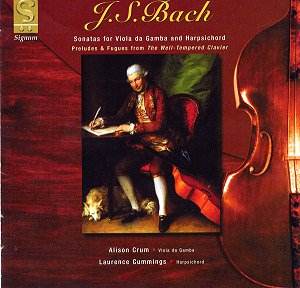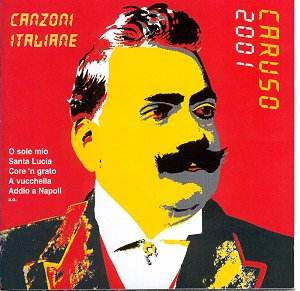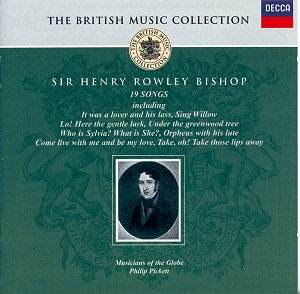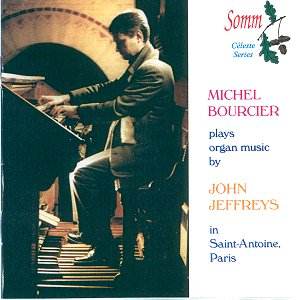 Composer: Johann Sebastian Bach
Composer: Johann Sebastian Bach
Works: Sonatas for Viola da Gamba and Harpsichord, BWV 1027-1029; Preludes and Fugues from the Well-Tempered Clavier, Book I
Performers: Alison Crum, viola da gamba; Laurence Cummings, harpsichord
Recording: November 1999
Label: SIGNUM
Bach’s Sonatas for viola da gamba and harpsichord, composed during his time in Köthen, present a fascinating interplay between the lyrical voice of the gamba and the harmonic complexity of the harpsichord. These works, while often overshadowed by the more famous cello suites and violin sonatas, offer a rich tapestry of melodic and contrapuntal intricacies that reveal Bach’s mastery of instrumental dialogue. The sonatas, written for the gamba—an instrument that had fallen somewhat out of favor by Bach’s era—feature a unique blend of sonority and texture that is especially illuminated in this recording by Alison Crum and Laurence Cummings.
Crum’s interpretation of the gamba part is nothing short of revelatory. She imbues each phrase with a warmth and expressiveness that elevates the music beyond its ostensibly simple structures. For instance, in the opening movement of the G major Sonata (BWV 1027), Crum’s phrasing captures the gentle unfolding of melodic lines, allowing the listener to appreciate the delicate balance between the voice of the gamba and the intricate harmonies of the harpsichord. Cummings, for his part, engages with the score’s complexities with a deft touch, navigating the contrapuntal demands with clarity and precision. The harpsichord, often relegated to a subordinate role in previous interpretations, here emerges as an equal partner, creating a vibrant dialogue that enriches the overall texture of the music.
The engineering quality of this recording also merits attention. The acoustic choices highlight the instruments’ timbres effectively, with the gamba’s rich, focused tone juxtaposed against the bright, brass-strung harpsichord. This balance is particularly significant in the D major Sonata (BWV 1028), where the interplay of parts demands a careful orchestration of sound. The decision to place the gamba slightly to the left and the harpsichord to the right creates a spatial awareness that enhances the listening experience, particularly when using headphones. While the harpsichord occasionally dominates in certain passages, this imbalance serves to underscore the dynamic interplay between the two instruments, reflecting the spirit of a live performance.
Crum and Cummings’ interpretations stand out in comparison to notable recordings by Jordi Savall and Ton Koopman, or Anner Bylsma and Bob van Asperen, which tend to emphasize the gamba’s role at the expense of the harpsichord’s contribution. This recording’s choice to elevate the harpsichord to a more prominent place in the mix is a daring yet rewarding decision that reveals the intricate textures of Bach’s writing. The addition of Preludes and Fugues from the Well-Tempered Clavier, while arguably a distraction, allows listeners to appreciate the thematic connections between these works and the sonatas, particularly in the shared harmonic language.
This recording of Bach’s Sonatas for Viola da Gamba and Harpsichord is a striking re-evaluation of these often-dismissed works. With masterful performances that illuminate the subtleties of the score and a sound quality that captures the instruments’ distinctive voices, Crum and Cummings have produced an essential recording for both ardent Bach enthusiasts and newcomers alike. The fresh interpretative choices breathe new life into these sonatas, transforming them from mere curiosities into compelling statements of Bach’s profound musicality.



